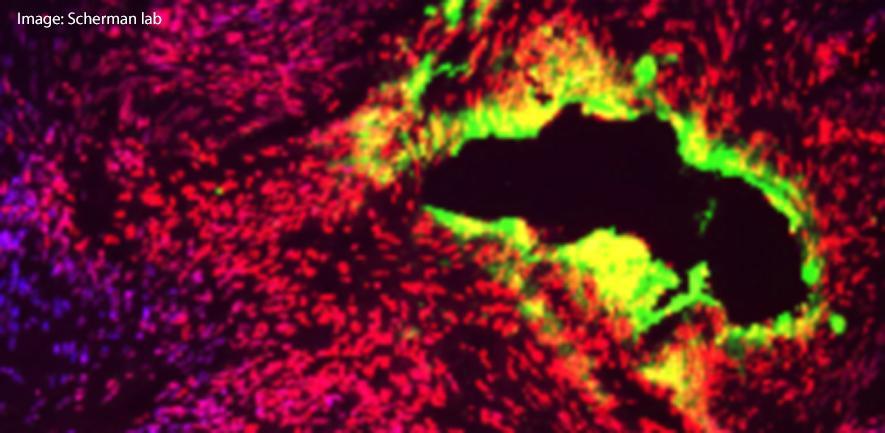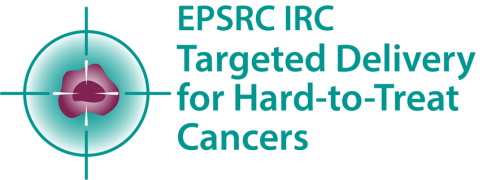
Local therapeutic delivery for brain cancer: an interdisciplinary approach
Prof Ryan Mathew, University of Leeds
Glioma is a brain cancer of unmet need. Despite current best treatment, median overall survival remains dismal at 12-15 months. Maximal safe resection is the preferred first step in glioma management. However, the post-resection tumour cavity is surrounded by infiltrative cancer cells that resist adjuvant chemoradiotherapy and drive recurrence. Surgical targeting of these cells is limited by their intermingling with healthy and/or eloquent brain. Limited biological models exist to study this so-called ‘margin zone.’
The Stem Cells and Brain Tumour Group at Leeds (co-led by Ryan Mathew and Heiko Wurdak), in conjunction with Academic Surgery, is working with partners in the IRC to utilise new, patient-derived in vitro and in vivo models to study the ‘margin zone’ and devise new local therapeutic interventions that can be deployed at the time of surgery. Examples include hydrogels, nanofibres and physically engineered devices.
Bionic chemotherapy: precision treatment of inoperable brain tumours
Prof Rylie Green, Imperial College
Bypassing the blood brain (BBB) to achieve localized drug delivery at the tumour site can be achieved by a physical device that penetrates the BBB. However prior attempts using fluid based technologies (convection enhanced delivery) led to increased intracranial pressure. Dry drug offloading removes the pressure but both wafer and gel technologies require a resection cavity in which the device can be placed, limiting the application to patients with accessible tumours.
Bionic chemotherapy circumvents these issues by enabling dry drug delivery (no liquid carrier) through a small gauge implantable device that can penetrate the tumour site. Electrical gradients are then used to drive the chemotherapeutic agent into the tissues in a controlled manner. This work focuses on the development of a conductive elastomer (CE) platform that enables the direct transfer of therapeutic molecules from the solid-state device. Studies have shown that both doxorubicin and cisplatin can be delivered in this manner and retain their chemotherapeutic potential against GBM cells. Using this unique delivery mechanism, bionic chemotherapy is positioned as an emerging treatment for brain tumours without the off-target effects seen with other local drug delivery techniques.
Organic nanocarriers for drug delivery to solid tumours
Prof Ljiljana Fruk, University of Cambridge
Modern molecular science is merging our knowledge of biochemistry, molecular biology, physics and even artificial intelligence to come up with materials that have a potential to take us into the era of precision medicine. Particular advances have been made in the design of bio-nano hybrids, which combine the biomolecules and man-made nanostructures and overcome intrinsic differences between individual elements.
A short talk will present the design of organic nanocarriers based on proteins and biocompatible polymers for delivery of drugs to solid tumours, in particular, pancreatic cancer. We will also look at the challenges within the field of nanocarrier design and what the future looks like for application of nanostructured materials in medicine.
A chick egg model for testing therapies in mesothelioma
Prof Judy Coulson, University of Liverpool
We have developed methodology for growing low-passage patient-derived malignant pleural mesothelioma (MPM) cell lines on the chorioallantoic membrane (CAM) of fertilised hen’s eggs as 3D vascularised tumours. The MPM-CAM model recapitulates many aspects of human disease and is a cost effective, higher throughput alternative to murine xenograft models to translate in vitro studies of emerging therapeutic interventions. Drugs can be administered topically onto tumour nodules, or systemically via intravenous or yolk sac injection, with effects monitored by bioluminescence imaging and histology. We are evaluating the model’s potential for testing novel delivery systems developed by IRC groups including hydrogels (Prof Scherman) and metal-organic frameworks (MOFs; Prof Fairen-Jimenez). We are investigating 1) optimal routes of administration, 2) any toxicity of the unloaded delivery systems on chick embryo survival, 3) uptake of delivery systems into MPM-CAM xenografts, and 4) efficacy of drug-loaded (e.g. platinum/pemetrexed) versus unloaded delivery systems in killing MPM-CAM xenografts. This biologically relevant preclinical model can provide a platform for pre-screening novel drug/delivery systems.
Supporting Technology Translation with Manufacturing Research
Prof Ronan Daly, University of Cambridge
The Manufacturing Cross-Cutting Theme within the EPSRC IRC in Hard-to-Treat Cancers identifies and explores underpinning scientific challenges that, when addressed, support translation of the targeted treatment technologies to the clinic. Here, we firstly present how to integrate technology-specific downstream challenges into research and secondly give examples of multidisciplinary research carried out within the theme to support both the IRC nanoparticle and implantable drug delivery technologies. The presentation concludes with a summary of key trends in medical device manufacturing and how they may influence future research.


